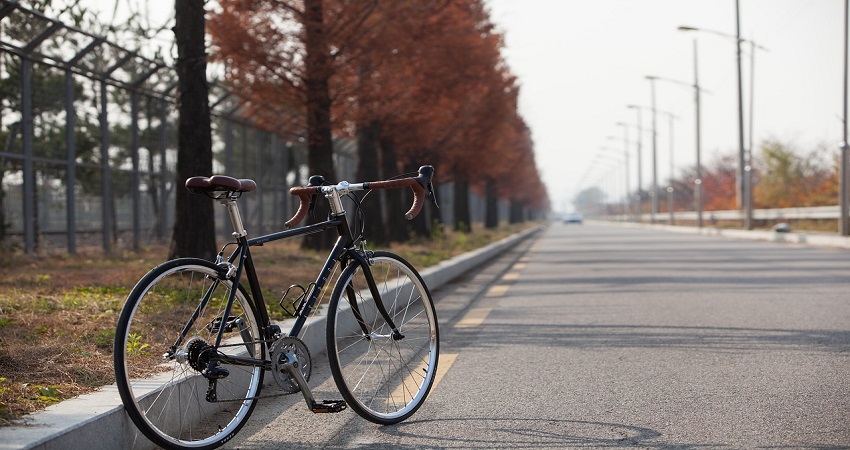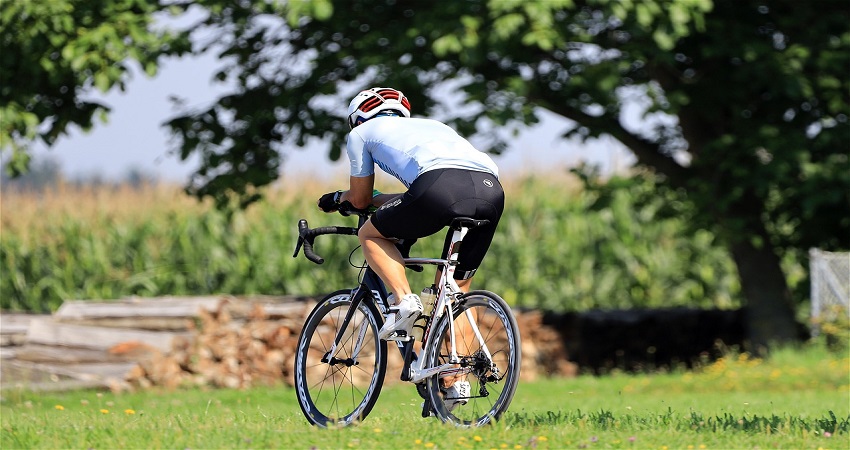A road bike should have at least 18-24 gear speeds to provide suitable options for various terrains and riding conditions. The gearing range is essential for climbing hills and accelerating on flat surfaces, enhancing the rider’s experience and performance.
Adequate gear speeds allow for comfortable pedaling at different speeds, making the road bike versatile for different riding styles and preferences. When choosing a road bike, the number of gears is a key consideration. The gear range influences the bike’s performance on different terrains, such as flat roads, steep climbs, and fast descents.
As such, having the right number of gears provides versatility for a rider to tackle various riding conditions effectively. Whether it’s a leisurely ride or intense training, the right gear range ensures a smooth and efficient cycling experience. With the proper gearing, cyclists can maintain an optimal cadence without overexerting themselves, leading to a more enjoyable and efficient ride.
Parts Of A Drivetrain
A road bike’s drivetrain consists of several key components that work together to transfer power from the rider to the wheels. Understanding these parts is essential for determining the ideal number of gears for a road bike, as each component plays a crucial role in optimizing performance and efficiency.
Understanding Key Components
When it comes to the drivetrain of a road bike, several key components play essential roles in the functioning of the gears. These include the crankset, cassette, chain, derailleurs, and shifters. The crankset houses the chainrings, which dictate the range of gearing available, while the cassette contains the individual gear cogs.
The chain connects the front and rear gears, and the derailleurs facilitate gear changes by moving the chain between these gears. Shifters, often integrated with the brake levers, allow the rider to control gear selection seamlessly.
Role Of Gears In Drivetrain
The drivetrain’s gears are integral to cycling performance, aiding riders in adapting to varying terrains and maintaining an optimal cadence. With the appropriate gear selection, cyclists can maximize their power output efficiently, particularly when tackling inclines or combating headwinds.
The gear ratio, determined by the combination of chainring and cog sizes, influences the effort required for pedaling and the speed achieved. Understanding how gears function within the drivetrain empowers cyclists to make informed gear choices, optimizing their riding experience.
Types Of Gears
A road bike should have a wide range of gears, typically between 18 to 28, to accommodate different terrains and riding conditions. Having multiple gears allows cyclists to easily shift between resistance levels, making it easier to maintain a comfortable cadence and reach desired speeds.
Mechanical Gears
One of the types of gears commonly found on road bikes is mechanical gears. These gears are manually operated by the rider and use a system of levers, cables, and derailleurs to shift between different gear ratios. Mechanical gears are popular among riders who prefer a more traditional and hands-on approach to shifting.
In a mechanical gear system, the rider uses their hands to control the shifts, either by using a set of levers attached to the handlebars or by using buttons integrated into the brake levers. The levers or buttons actuate the derailleurs, which are responsible for moving the chain between different sprockets on the cassette and chainrings on the crankset.
One advantage of mechanical gears is their simplicity and durability. The components used in mechanical gear systems are generally more affordable and easier to maintain compared to electronic gears. Additionally, mechanical gears can be adjusted and fine-tuned by the rider to suit their preferences and riding style.
Electronic Gears
Electronic gears, also known as electronic shifting systems, are another type of gears commonly used on road bikes. As the name suggests, these gears rely on electronic mechanisms to shift between different gear ratios, providing a precise and seamless shifting experience.
Electronic gears work by utilizing small motors and sensors that communicate with each other to shift the chain. When the rider initiates a shift, the motor moves the derailleur to position the chain onto the desired sprocket or chainring. This system offers precise and instant shifting with minimal effort required from the rider.
One of the main advantages of electronic gears is their reliability and consistency. Since the shifting is controlled by motors and sensors, the shifts are executed with greater accuracy and consistency compared to mechanical gears. This can result in smoother gear changes and reduce the risk of dropped chains.
Electronic gears also offer some additional features that can enhance the overall riding experience. For example, some electronic gear systems can be customized to allow the rider to adjust the speed and sensitivity of the shifts. Additionally, electronic gears can be connected to compatible cycling computers or mobile apps, providing real-time data and allowing for easier fine-tuning of the gear ratios.
Gear Ratios Explained
Road bike gear ratios refer to the relationship between the number of teeth on the front chainring and the rear cassette. This relationship directly affects the pedaling effort and speed while riding. A lower gear ratio means easier pedaling but slower speed, while a higher gear ratio requires more effort but yields higher speed.
Gear ratios play a crucial role in determining the performance of a road bike. A well-chosen gear ratio can significantly impact your cycling experience, affecting your ability to climb hills, maintain speed on flat terrain, and navigate varying riding conditions.
Determining The Optimal Gear Ratio
Determining the optimal gear ratio for your road bike is crucial in order to maximize your efficiency and performance. The gear ratio refers to the relationship between the number of teeth on the front chainring (attached to the pedals) and the number of teeth on the rear cassette (attached to the rear wheel).
It determines how easy or hard it is to pedal at a given speed. When selecting the gear ratio for your road bike, there are a few important considerations to keep in mind:
- Gear Range: Determine the range of gears that you need based on the terrain you typically ride on. If you frequently encounter steep hills or challenging inclines, you may want a wider range of gears to help you maintain an optimal cadence. On the other hand, if you primarily ride on flat terrain, you may not need as many gears.
- Cadence: Consider your preferred cadence, which refers to the speed at which you pedal. A higher cadence is generally more efficient and puts less strain on your muscles and joints. If you prefer to pedal at a high cadence, you may want a gear ratio that allows you to maintain that cadence across different speeds.
- Experience Level: Your experience level as a cyclist can also influence the gear ratio you choose. Beginners may benefit from a wider gear range that allows for easier pedaling on inclines, while advanced riders may prefer a narrower gear range for more precise gear changes.
Several factors can affect the suitable gear ratio for your road bike. These factors should be taken into account when determining the optimal gear ratio for your specific needs:
| Factor | Description |
|---|---|
| Terrain | Different terrains require different gear ratios. For example, hilly terrains may require lower gears to conquer the climbs, while flats may allow for higher gears to maintain speed. |
| Fitness Level | Your fitness level can impact the gear ratio you choose. Less fit individuals may prefer lower gears to help them tackle difficult terrain, while well-trained cyclists may opt for higher gears to push themselves. |
| Riding Style | Your riding style also plays a role in selecting the gear ratio. If you tend to push hard and sprint, you may prefer higher gears. However, if you value maintaining a steady cadence and conserving energy, lower gears may be more suitable. |
| Bike Weight | The weight of your bike can impact the gear ratio you choose. Heavier bikes may benefit from lower gears to compensate for the additional weight, while lighter bikes may allow for higher gears. |
By considering these factors and evaluating your personal preferences, terrain, and cycling goals, you can determine the optimal gear ratio for your road bike. Remember that finding the appropriate gear ratio may require some experimentation and fine-tuning based on your individual needs.
Practical Tips For Using Road Bike Gears
Maintaining Cadence
Keeping a consistent pedaling rhythm is vital for efficiency and power.
- Maintain a cadence between 80-100 rpm for optimal performance.
- Use gears to adjust cadence based on terrain and speed.
Shifting Techniques For Different Terrains
Adapt your gear shifts to conquer various landscapes effectively.
- Shift to a lower gear before reaching a steep incline to maintain momentum.
- For downhill descents, shift to a higher gear to maximize speed without overexertion.
Cleaning And Maintaining Gears
Road bikes should ideally have up to 22 gears, with a combination of a double or compact crankset paired with an 11-speed cassette. This provides a wide range of gearing options for both hills and flat roads while maintaining efficient cadence.
Regular maintenance of the gears is crucial for smooth shifting and prolonged gear life.
Importance Of Regular Maintenance
Regular maintenance is crucial to ensure the longevity and functionality of your road bike gears.
- Maintaining gears leads to smoother shifting and overall better performance.
- Preventive maintenance can help avoid costly repairs in the future.
Cleaning Techniques For Prolonged Gear Lifespan
Proper cleaning techniques play a vital role in extending the lifespan of your road bike gears.
- Clean gears with a mild degreaser to remove dirt and grime buildup.
- Use a soft brush or cloth to gently scrub the components.
- Regularly lubricate the gears to prevent rust and ensure smooth operation.
Frequently Asked Questions
How Many Speeds Is A Good Road Bike?
A good road bike typically has 18 to 22 speeds, offering a range of gearing options for different terrains and riding preferences.
Is 16 Gears Enough On A Road Bike?
A road bike with 16 gears is sufficient for most riders, offering versatility in various terrains.
What Is The Best Gear Ratio For A Road Bike?
The best gear ratio for a road bike depends on the terrain and your riding style. Lower ratios are suitable for climbing, while higher ratios are for flat roads and speed. It’s essential to find a balance that suits your needs.
Is A 14 Speed Road Bike Good?
A 14-speed road bike is a good option for those who enjoy versatile cycling experiences. With a wide range of gears, it allows riders to tackle various terrains and adapt to different riding conditions easily. Whether you’re climbing hills or sprinting on flat roads, a 14-speed road bike offers the flexibility and control you need for an enjoyable ride.
Conclusion
When choosing the gears for your road bike, it’s essential to consider your riding style and terrain. Understanding gear ratios and how to maintain cadence will enhance your cycling experience. Whether it’s a bike with multiple speeds or a single-speed bike, finding the right gear will optimize your performance on the road.





